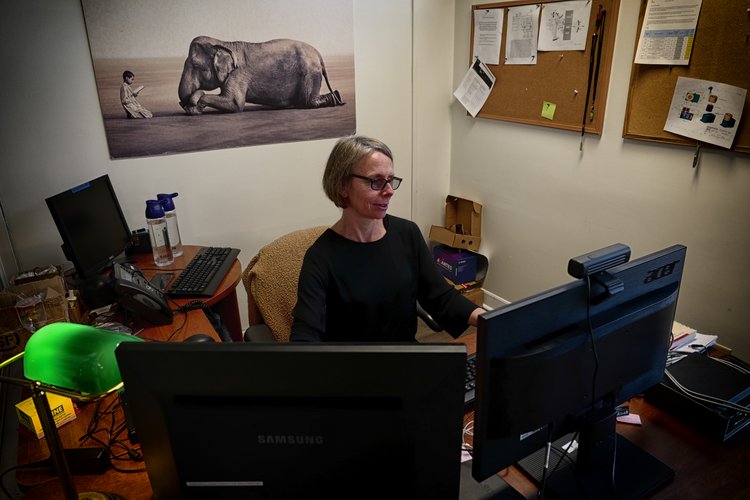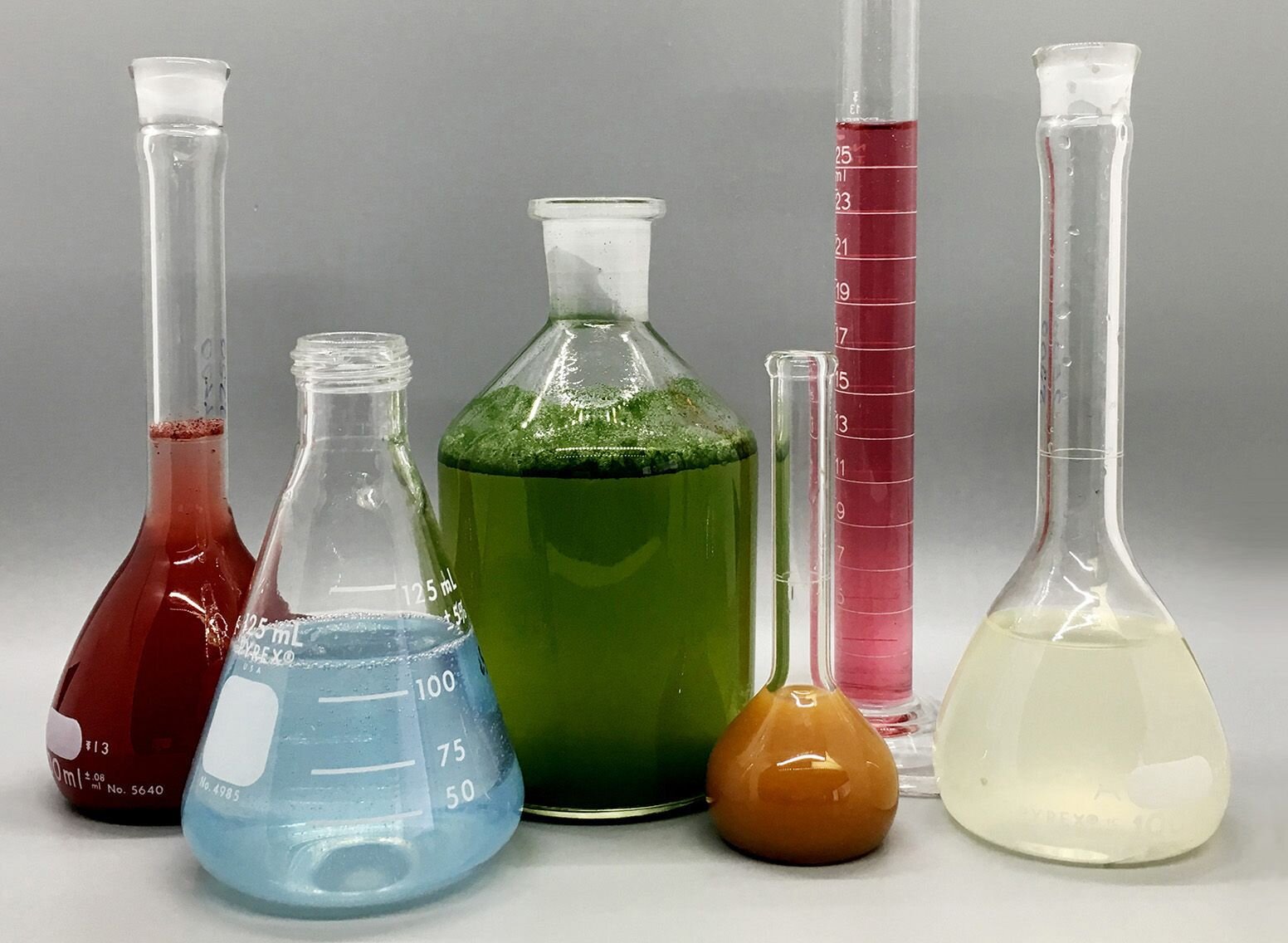The Main Principles Of Uv/vis
The Main Principles Of Uv/vis
Blog Article
Not known Details About Circular Dichroism
Table of ContentsThe Facts About Circularly Polarized Luminescence RevealedUv/vis/nir Fundamentals ExplainedThe 45-Second Trick For Circularly Polarized LuminescenceIndicators on Circularly Polarized Luminescence You Need To KnowNot known Facts About Circularly Polarized LuminescenceSome Known Incorrect Statements About Circularly Polarized Luminescence The Basic Principles Of Uv/vis/nir 7 Simple Techniques For Uv/visGet This Report on SpectrophotometersSome Of Uv/vis/nirFacts About Circular Dichroism RevealedThe Basic Principles Of Spectrophotometers Little Known Facts About Circular Dichroism.
It is then scanned through the sample and the reference options. Fractions of the incident wavelengths are transferred through, or shown from, the sample and the recommendation. Electronic circuits transform the relative currents into direct transmission portions and/or absorbance/concentration worths.The transmission of a recommendation substance is set as a standard (information) worth, so the transmission of all other substances are taped relative to the initial "zeroed" substance. The spectrophotometer then transforms the transmission ratio into 'absorbency', the concentration of specific components of the test sample relative to the initial compound.
Given that samples in these applications are not easily offered in big quantities, they are particularly fit to being evaluated in this non-destructive strategy. In addition, precious sample can be conserved by using a micro-volume platform where as little as 1u, L of sample is required for complete analyses. A brief description of the procedure of spectrophotometry consists of comparing the absorbency of a blank sample that does not contain a colored compound to a sample which contains a colored compound.
Spectrophotometers Fundamentals Explained
In biochemical experiments, a chemical and/or physical property is picked and the procedure that is utilized is particular to that residential or commercial property in order to obtain more information about the sample, such as the amount, pureness, enzyme activity, etc. Spectrophotometry can be utilized for a number of techniques such as identifying ideal wavelength absorbance of samples, figuring out optimal p, H for absorbance of samples, figuring out concentrations of unidentified samples, and figuring out the p, Ka of different samples.: 21119 Spectrophotometry is also a useful procedure for protein filtration and can likewise be utilized as an approach to create optical assays of a compound.
It is possible to understand the concentrations of a two part mix utilizing the absorption spectra of the basic options of each component. To do this, it is required to understand the termination coefficient of this mix at two wave lengths and the termination coefficients of solutions that contain the known weights of the 2 elements.

Not known Incorrect Statements About Uv/vis
The majority of spectrophotometers are utilized in the UV and visible regions of the spectrum, and a few of these instruments likewise run into the near-infrared Area. The concentration of a protein can be approximated by determining the OD at 280 nm due to the existence of tryptophan, tyrosine and phenylalanine (https://dzone.com/users/5082179/olisclarity1.html).
Nucleic acid contamination can likewise interfere. This method requires a spectrophotometer efficient in measuring in the UV region with quartz cuvettes.: 135 Ultraviolet-visible (UV-vis) spectroscopy includes energy levels that thrill electronic transitions. Absorption of UV-vis light delights molecules that remain in ground-states to their excited-states. Noticeable area 400700 nm spectrophotometry is utilized extensively in colorimetry science.
20. 8 O.D. Ink makers, printing companies, fabrics vendors, and numerous more, require the data offered through colorimetry. They take readings in the area of every 520 nanometers along the visible region, and produce a spectral reflectance curve or a data stream for alternative discussions. These curves can be utilized to evaluate a brand-new batch of colorant to inspect if it makes a match to specifications, e.
Some Ideas on Spectrophotometers You Need To Know
Traditional visible area spectrophotometers can not identify if a colorant or the base product has fluorescence. This can make it challenging to manage color concerns if for example one or more of the printing inks is fluorescent. Where a colorant includes fluorescence, a bi-spectral fluorescent spectrophotometer is used (https://padlet.com/julieanndesalorenz30606/olis-clarity-srqqvp7768okh664). There are 2 significant setups for visual spectrum spectrophotometers, d/8 (round) and 0/45.
Scientists use this instrument to determine the amount of compounds in a sample. If the substance is more concentrated more light will be taken in by the sample; within little ranges, the Beer, Lambert law holds and the absorbance in between samples vary with concentration linearly. When it comes to printing measurements two alternative settings are frequently utilized- without/with uv filter to control much better the result of uv brighteners within the paper stock.
The 4-Minute Rule for Spectrophotometers
Some applications require small volume Check This Out measurements which can be performed with micro-volume platforms. As explained in the applications area, spectrophotometry can be utilized in both qualitative and quantitative analysis of DNA, RNA, and proteins. Qualitative analysis can be utilized and spectrophotometers are used to record spectra of substances by scanning broad wavelength areas to figure out the absorbance homes (the strength of the color) of the substance at each wavelength.

Little Known Facts About Spectrophotometers.
One major element is the kind of photosensors that are offered for different spectral areas, however infrared measurement is likewise tough due to the fact that virtually whatever releases IR as thermal radiation, specifically at wavelengths beyond about 5 m. Another issue is that numerous materials such as glass and plastic absorb infrared, making it incompatible as an optical medium.
Samples for IR spectrophotometry might be smeared in between two discs of potassium bromide or ground with potassium bromide and pressed into a pellet. Where liquid solutions are to be determined, insoluble silver chloride is used to construct the cell. Spectroradiometers, which operate almost like the noticeable area spectrophotometers, are developed to measure the spectral density of illuminants. Retrieved Dec 23, 2018. Fundamental Lab Approaches for Biochemistry and Biotechnology (Second ed.). The vital guide to analytical chemistry.
Oke, J. B.; Gunn, J. E.
The Ultimate Guide To Uv/vis

Ninfa AJ, Ballou DP, Benore M (2015 ). Basic Laboratory Techniques for Biochemistry and Biotechnology (3, rev. ed.). UV/Vis. Laboratory Equipment.
Examine This Report about Uv/vis/nir
"Applied Spectrophotometry: Analysis of a Biochemical Mixture". Biochemistry and Molecular Biology Education. Journal of Biochemistry Education.
Spectrophotometers for Dummies
U.S. Department of Commerce National Bureau of Standards special publication; 378. Washington, D.C.: U.S. National Bureau of Standards.
The process starts with a regulated light source that illuminates the evaluated sample. When it comes to reflection, as this light connects with the sample, some is absorbed or produced. The discharged light journeys to the detector, which is analyzed, measured, and presented as industry-standard color scales and indices.
All terms are examined over the visible spectrum from 400 to 700 nm. In the case of transmission, when the light interacts with the sample, it is either soaked up, reflected, or transmitted.
The Best Strategy To Use For Circularly Polarized Luminescence
Examples consist of APHA (American Public Health Association) for watercolor and purity analysis, ASTM D1500 for petrochemical color analysis, edible oil indices used in food, and color analyses of beverages. All terms are examined over the noticeable spectrum from 400 to 700 nm.
Image Credit: Matej Kastelic/ Dr. Arnold J. Beckman and his coworkers at the National Technologies Laboratories initially created the spectrophotometer in 1940. In 1935 Beckman established the company, and the discovery of the spectrophotometer was their most ground-breaking creation.
The Best Strategy To Use For Uv/vis/nir
Over time, researchers kept improving the spectrophotometer design to boost its performance. The UV abilities of the model B spectrophotometer were enhanced by replacing the glass prism with a quartz prism.
After 1984, double-beam versions of the device were created. The addition of external software application with the provision of onscreen screens of the spectra came in the 1990s. Typically, a spectrophotometer is made up of two instruments, namely, a spectrometer and a photometer. A basic spectrophotometer consists of a light source, a monochromator, a collimator for straight beam transmission, a cuvette to put a sample, and a photoelectric detector.
Little Known Questions About Uv/vis.
There are different kinds of spectrophotometers in numerous sizes and shapes, each with its own purpose or performance. A spectrophotometer determines just how much light is shown by chemical components. UV/Vis/NIR. It measures the distinction in light intensity based on the total quantity of light presented to a sample and the amount of beam that passes through the sample service
As per the instrument's design, the sample is placed between the spectrometer and the photometer. After the light is travelled through the sample, the photometer determines its strength and displays the reading. A spectrophotometer is used to identify the concentration of both colorless and colored solutes in an option. This instrument is used to determine the rate of a response.
Report this page